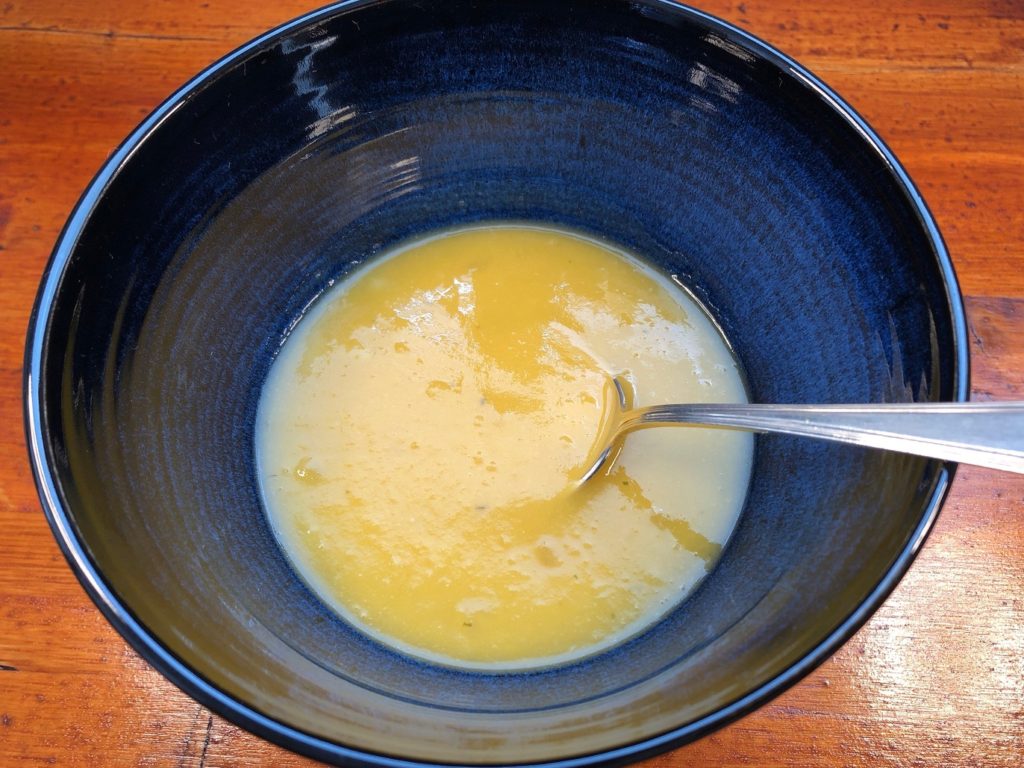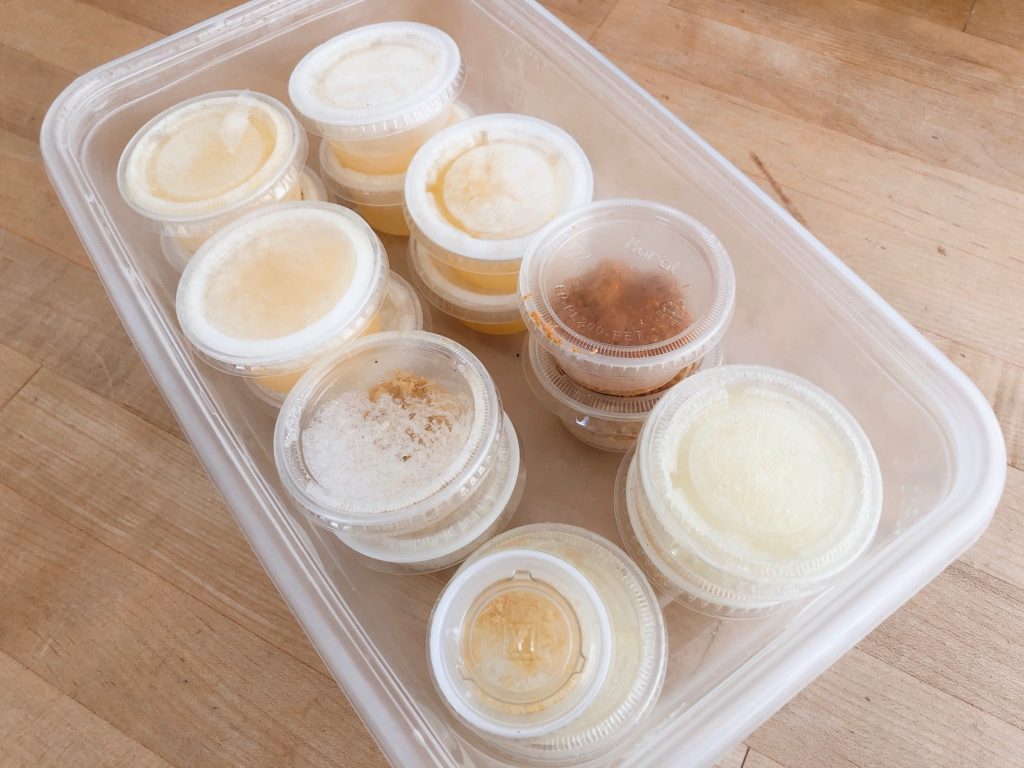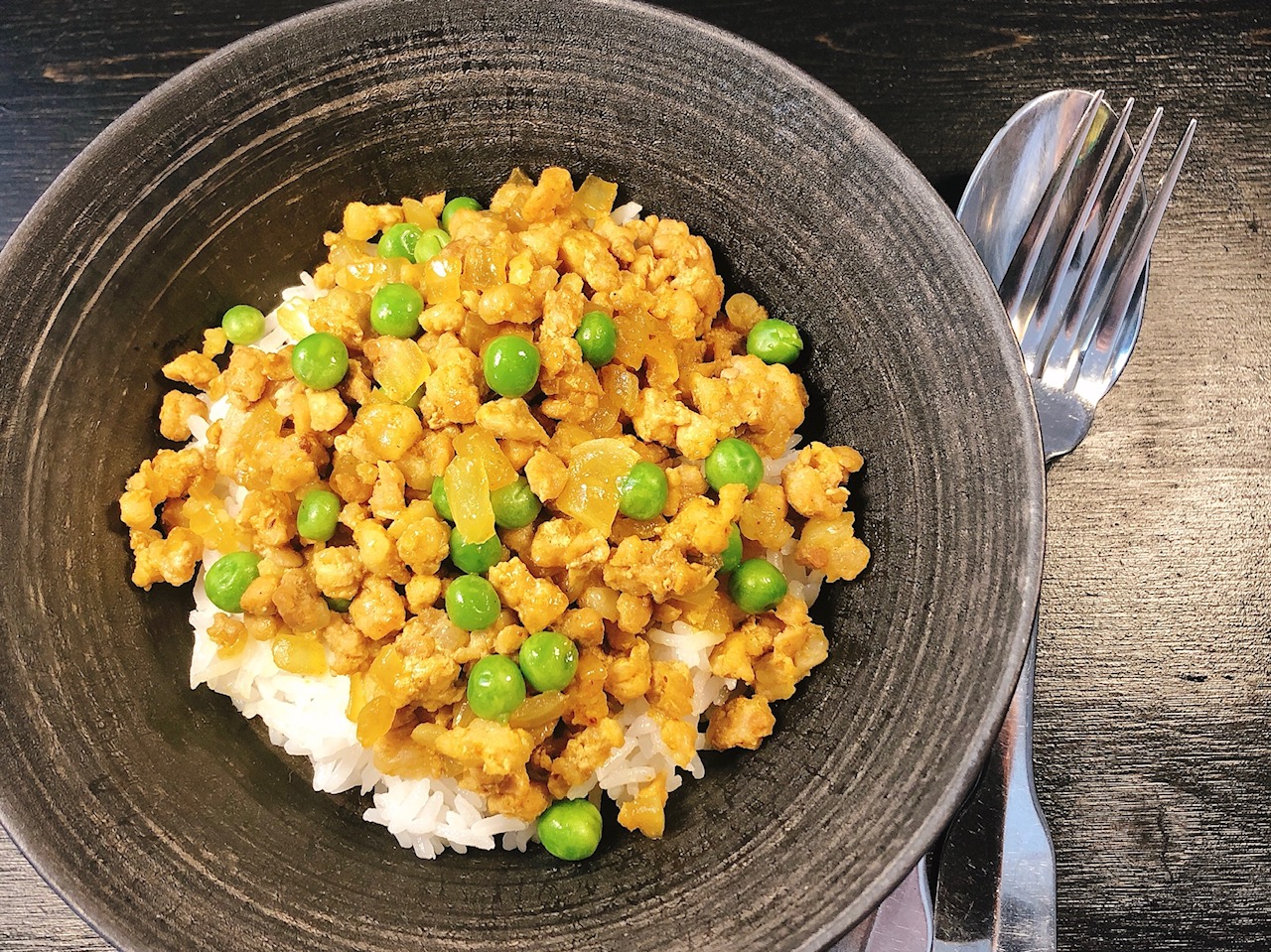No Food Waste when Sheltering in Place

Being in the group most vulnerable to the coronavirus, Steve and I are no longer food shopping. Instead, we’re relying on grocery deliveries and CSA boxes from a farm.
When you can’t pick up a few things at the supermarket on a whim, food becomes more precious. Scarcity has a way of teaching us lessons.
New Behaviors to Ensure No Food Waste
For example, when the outer leaves of green onions get slimy, I used to throw the bunch out. Recently, I peeled back the bad leaves, washed the good parts, drizzled with olive oil, seasoned with salt and pepper, and roasted them at 350 degrees until slightly charred. Delicious.
I’ve even kept the root end of the green onions. I’m going to plant them in a pot, hoping to resurrect a new batch.
Sheltering in place? Here are some shopping tips and recipes that might help.
Another example: my pre-washed container of spinach was just starting to deteriorate. Instead of composting the lot, I put the spinach in a bowl, added water to float out the bad leaves, rewashed the good leaves, and spun them dry for a salad.
Some Ways to Make Food Last
Here are some of the ways I’m ensuring my food purchases last until I receive my next grocery order:
- Freeze milk. Frozen milk will expand, so drink some of the milk before freezing. Defrost in the refrigerator, as needed. It will take a few days for the milk to thaw, so plan ahead. Here’s a good primer.
- If you can’t use a whole hand of fresh ginger, cut it up in smaller nubs, put the pieces in a zip-top freezer bag, and freeze. I also froze peeled garlic cloves in the same way.
- If you have no plans for the lemons in your fridge, squeeze the juice and store in small plastic containers–the kind takeout sauces come in. Grate the peels and put them in separate containers. Pack these little containers into a bigger one so they don’t get lost. This is a good way to save leftover tomato paste, chiles in adobo, or leftover pesto, too.

A Soup from Scraps
Another way I’m conserving is by making “cream” soups.
I had some roasted, puréed pumpkin in my freezer left over from my Thanksgiving table centerpiece. I defrosted it to make two loaves of pumpkin bread, but I still had a cup of purée, so I turned it into a creamy pumpkin soup.
This is a great way to use up the last bits of a vegetable to avoid food waste. You don’t need a recipe. Just sauté some diced onion, potato, and a vegetable in butter, add chicken stock, then purée the soup. The potato will give the soup body and a creamy texture.
You can use most vegetables, such as broccoli, carrots, asparagus or cauliflower. Just don’t combine different vegetables in one soup because you could end up with an unattractive, muddy-looking broth.
Carrots make a cheerful, bright-orange soup that’s slightly sweet. It’s lovely sprinkled with minced dill or mint. Asparagus is intense and is best left for true asparagus lovers like me.
Basic “Cream” Soup
2 tablespoons butter
2 tablespoons diced onion
3/4 cup diced potato
1 1/2 cups diced vegetables such as carrots, broccoli, cauliflower, or asparagus
1 can (14 ounces) reduced-sodium chicken broth
Salt and pepper
In a pot over medium heat, melt butter and sauté onion until translucent, about 3 minutes. Add potato and vegetable of your choice; sauté until vegetables just begin to take on a deeper color and brown slightly, about 3 minutes. Add stock, bring to a boil and simmer, covered, about 10 minutes or until vegetables are soft. Ladle vegetables into a food processor or blender, adding about a cup of the liquid. Purée until smooth. Add the rest of the liquid and purée to blend thoroughly.
Season soup with salt and pepper; serve hot or chilled. If soup separates, whisk to blend.
Makes 2 servings.
Caution: Be careful with hot soup; do not fill the blender more than the manufacturer recommends or soup can splash out over the top.
Note: If you have a hand blender, you can purée the soup directly in the pot. Be careful of hot splashes.
Customize your soup:
- For an even creamier soup, whisk in some cream or sour cream before serving, if you have some. Correct the seasoning with additional salt and pepper, if needed.
- For presentation, you can add a dollop of sour cream or yogurt to each serving.
- Serve soup with a sprinkling of minced herbs like chives, mint, cilantro, parsley, basil, tarragon or dill, if you have some.
- This versatile soup is good both hot or cold.
